When Does a Boxer STOP Growing? (Growth Chart)
There are fewer things that bring more joy to a home than a new Boxer puppy. But if you have limited space in your home and your Boxer seems to keep growing, you might be concerned that they’ll outgrow the 21.5 to 25-inch height range.
So, when does a Boxer stop growing?
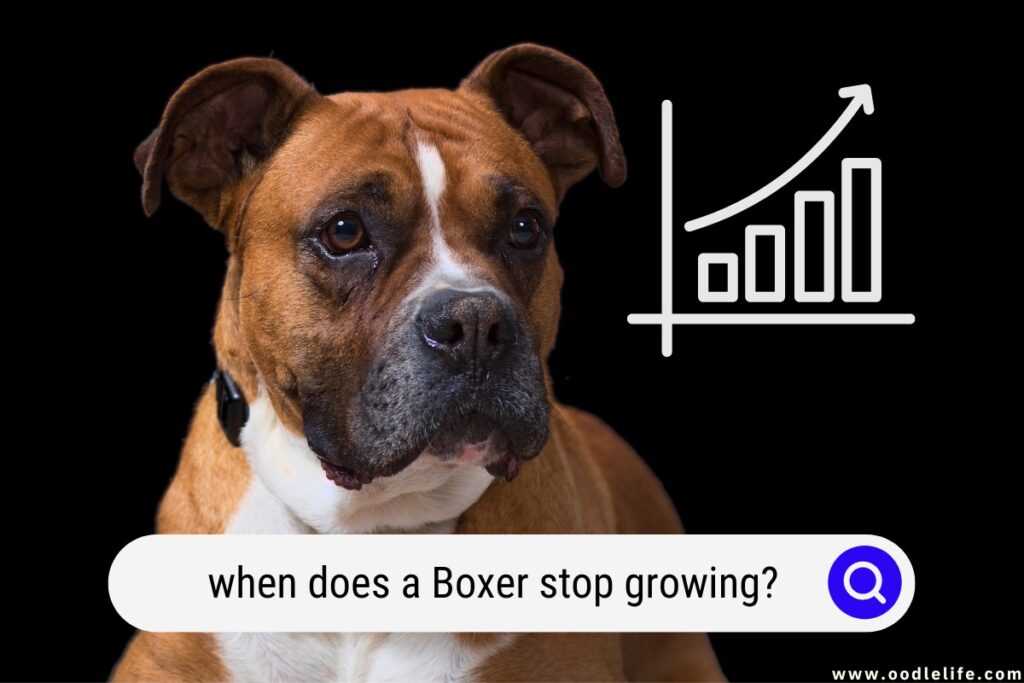
Boxers stop most of their height and weight growth at 12 months old. However, they might grow slightly taller and put on a little more weight between 1 and 2 years old.
Nevertheless, I can assure you that Boxers grow faster during their first few months of life. The pace of their growth then slows as they get older.
Boxer Height Growth Chart
I’m sure you’re itching to see if your Boxer puppy is on track with their growth. So, below is a chart showing approximately how many inches (in) you can expect them to grow according to their gender between 8 weeks and 24 months of age.
| Age | Male Height | Female Height |
| 2 months | 7 in | 7 in |
| 2.5 months | 10 in | 10 in |
| 3 months | 12 in | 12 in |
| 4 months | 14 in | 14 in |
| 5 months | 16 in | 15 in |
| 6 months | 18 in | 17 in |
| 7 months | 20 in | 18 in |
| 8 months | 21 in | 19 in |
| 9 months | 22 in | 21 in |
| 10 months | 23 in | 22 in |
| 12 months | 24 in | 23 in |
| 24 months | 25 in | 23 in |
Keep in mind that this is an estimate. If your Boxer puppy is slightly above or below these numbers, there shouldn’t be anything to worry about.
But if you realize your puppy is growing at a significantly slower rate than the numbers shown here, it’s worth taking them to the vet to ensure there’s no medical reason at play.
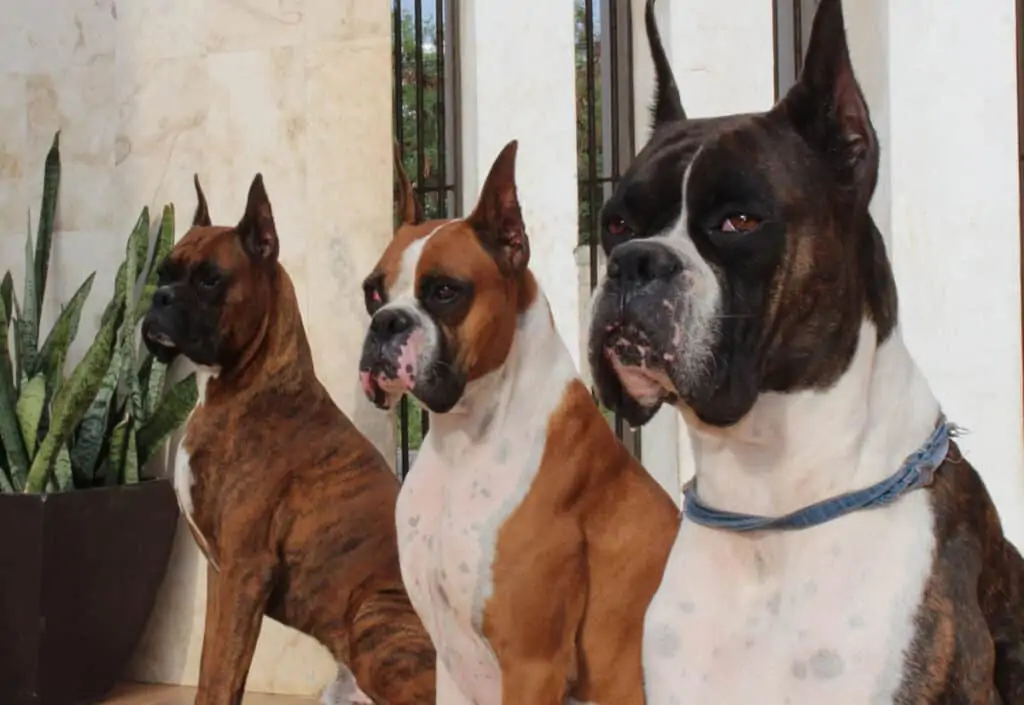
Boxer Weight Growth Chart
Now, let’s look at approximately how many pounds (lbs) your Boxer should weigh as they grow, keeping in mind that females often weigh less than males.
| Age | Male Weight | Female Weight |
| 1 month | 5.5 – 9 lbs | 4.8 – 8 lbs |
| 2 months | 16 – 20 lbs | 11 – 17 lbs |
| 3 months | 22 – 26 lbs | 22 – 26 lbs |
| 4 months | 30 – 35 lbs | 28 – 30 lbs |
| 5 months | 35 – 41 lbs | 33 – 37 lbs |
| 6 months | 41 – 48 lbs | 39 – 44 lbs |
| 7 months | 48 – 55 lbs | 44 – 50 lbs |
| 8 months | 50 – 57 lbs | 50 – 52 lbs |
| 9 months | 52 – 61 lbs | 52 – 59 lbs |
| 10 months | 55 – 63 lbs | 52 – 59 lbs |
| 11 months | 57 – 66 lbs | 52 – 59 lbs |
| 12 months | 57 – 68 lbs | 55 – 61 lbs |
| 18 months | 60 – 70 lbs | 55 – 63 lbs |
| 24 months | 60 – 70 lbs | 55 – 65 lbs |
As you can see, Boxer puppies begin with an exponential growth rate during their first few months of life. Things then taper off as they age, with them gaining little to no weight between their first and second birthdays.
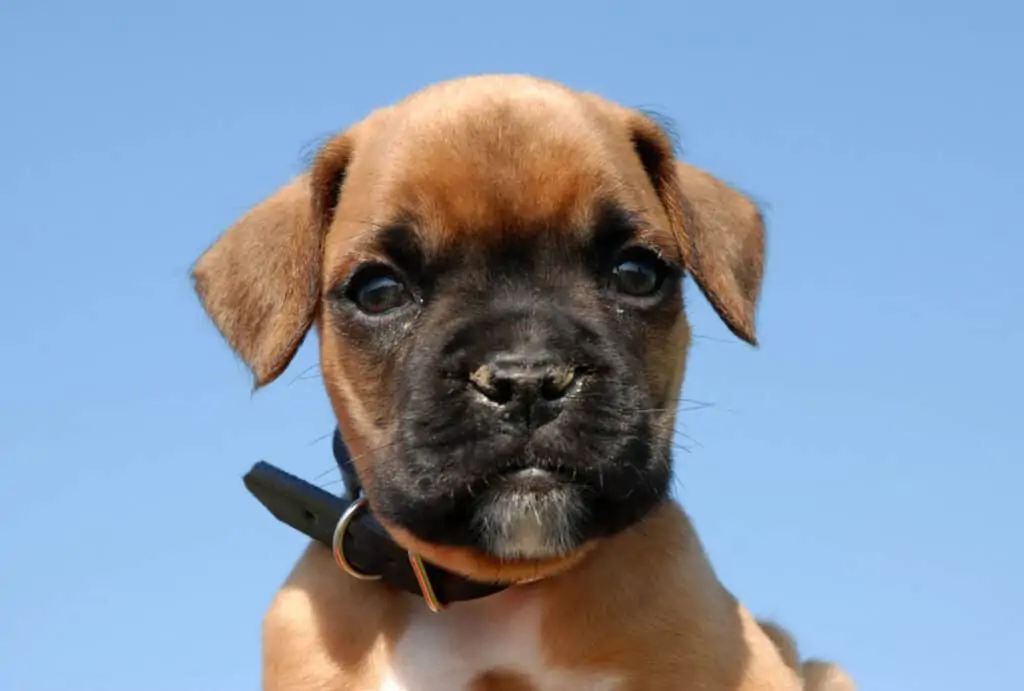
Do Boxers Have Different Growth Stages?
Boxers undergo several different stages during their lives, similar to how humans change as they develop from babies to teenagers to adults.
So, don’t worry if you notice your Boxer passing through the following stages:
- Puppy fat stage
- Skinnier and lengthier stage
- Redistributing their weight stage
The final stage occurs once your Boxer reaches adulthood. A healthy adult Boxer will have a noticeable tuck in their waist and a muscular build.
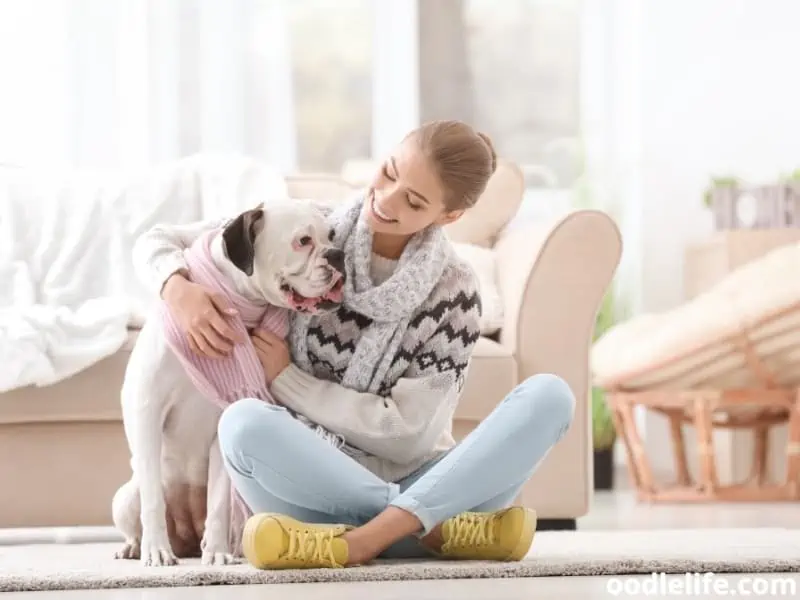
Factors Impacting a Boxer’s Size
While you can rest assured that your Boxer is full-grown by the time they’re 2 years old, several factors can impact their size until then. I’ll walk you through the most common situations that can affect how big a Boxer will be as an adult and things you can do to help them achieve proper growth.
Genes
If you bring home a Boxer whose parents ran on the small side or vice versa, there’s no amount of nutrition hacks you can accomplish to get them to grow bigger or smaller—you can’t outsmart your dog’s genetic makeup.
For this reason, if the size of your Boxer is crucial to you, I encourage you to work with a reputable breeder. That way, they can share the dog’s lineage, so you can see just how short or tall the puppy’s parents and grandparents were.
Of course, some puppies may not follow the genetic makeup expected of them, but such situations are uncommon.
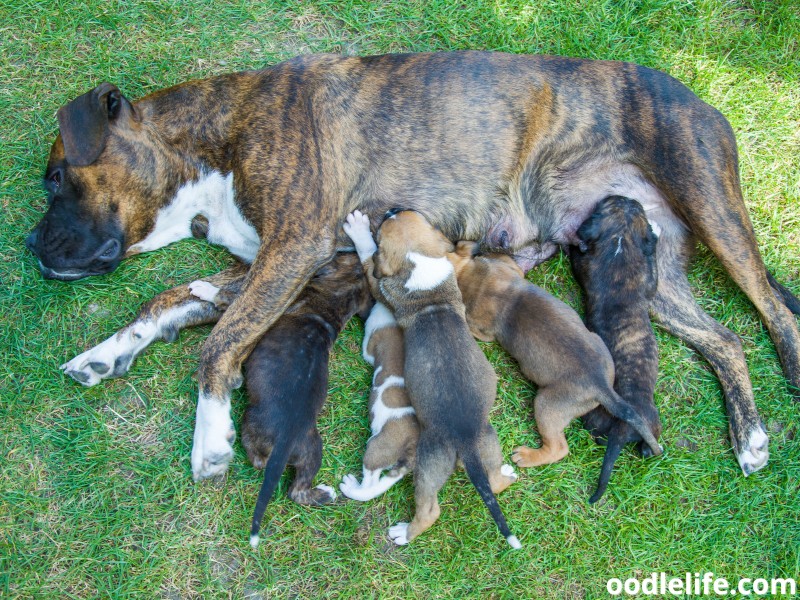
Quality of Nutrition
During the first six months of age, a Boxer puppy’s nutritional requirements change rapidly. A notable change is that puppies require less protein and fat the older they get. So, feeding them food with the same nutritional composition as when they were younger could damage their growth.
The easiest way to ensure your Boxer puppy gets proper nutrition for growth is by purchasing high-quality dog food that applies to your pet’s age range. Don’t buy too much of it, for you’ll soon need to toss the bag in favor of different food that aligns with their nutritional needs as they age.
The amount and timing of when you feed your Boxer are also vital. Your Boxer puppy can handle larger portions of food two to three times per day as it grows. Such a feeding schedule can be damaging to a younger puppy, who needs several smaller meals to achieve growth.
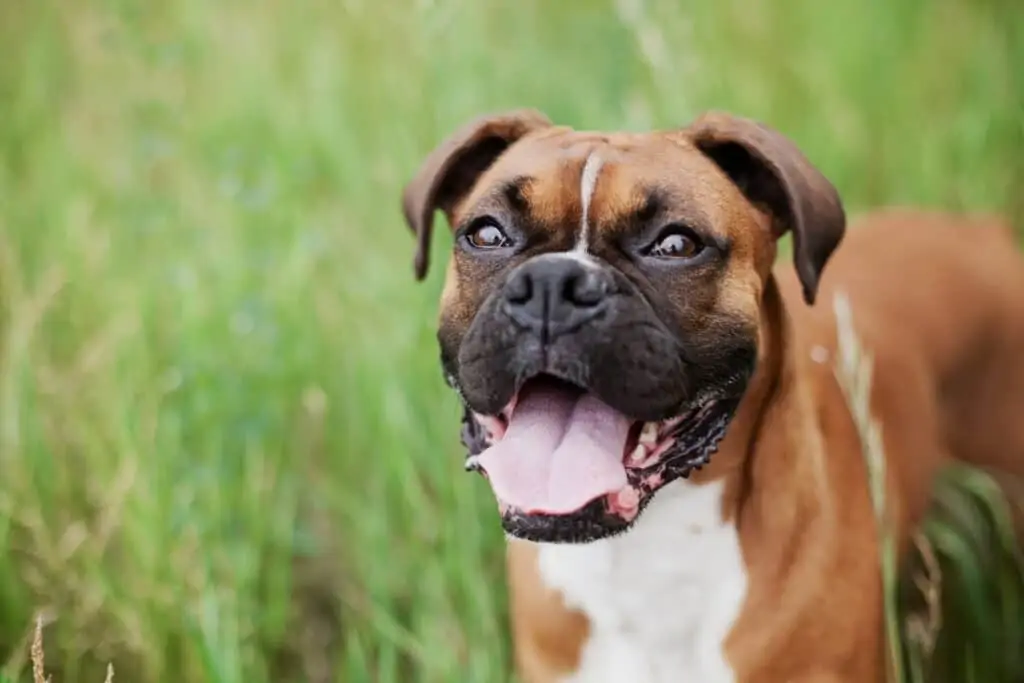
Gender
As with humans, there’s often a noticeable difference between male and female Boxer sizes. You can expect male Boxers to grow taller and heavier than females within any given litter.
The key here is within a litter.
So, if you compare a male puppy with genes of relatively short parents and a female puppy from a different set of parents with taller genes, it’s likely that the male and female will either be equal height or the female will be even taller.
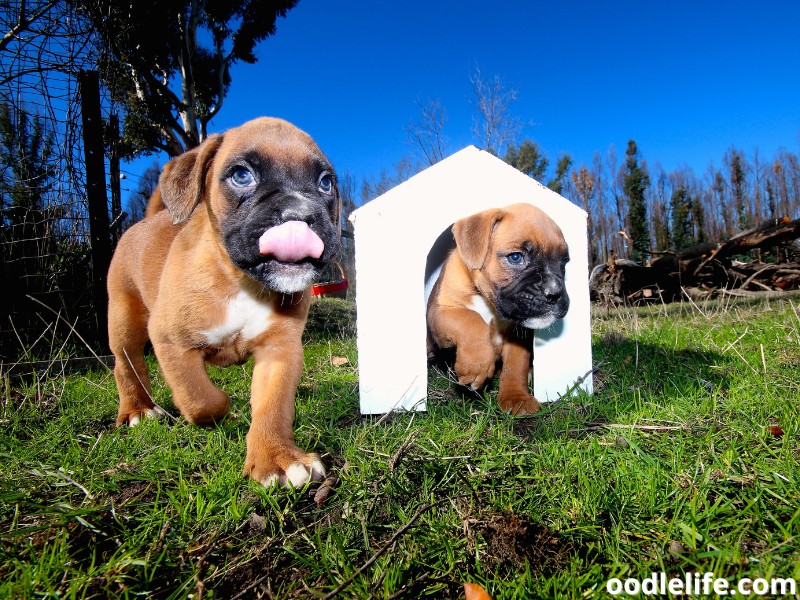
Exercise Intensity
You may not have expected exercise to play a role when asking, “when does a Boxer stop growing?” But here’s the truth: Too much exercise can stunt your puppy’s growth, causing lifelong joint and bone problems.
How does this happen, you wonder?
It’s because when Boxer puppies are growing, they have soft growth plates, allowing them to continue adding length to their bones. But until their growth plates calcify, puppies are in a fragile state, meaning that excessive exercise or exercising on hard surfaces can hinder their growth.
The longer-term ramifications of too much exercise at too young of an age are often arthritis and hip dysplasia. Most veterinarians recommend five minutes of exercise per month of age, meaning a 4-month-old Boxer can safely have 20 minutes of exercise per day.
Although many dogs’ growth plates close between 9 and 11 months old, I recommend checking with your veterinarian for advice on when they think it’s safe to go on that long-distance run with your Boxer.
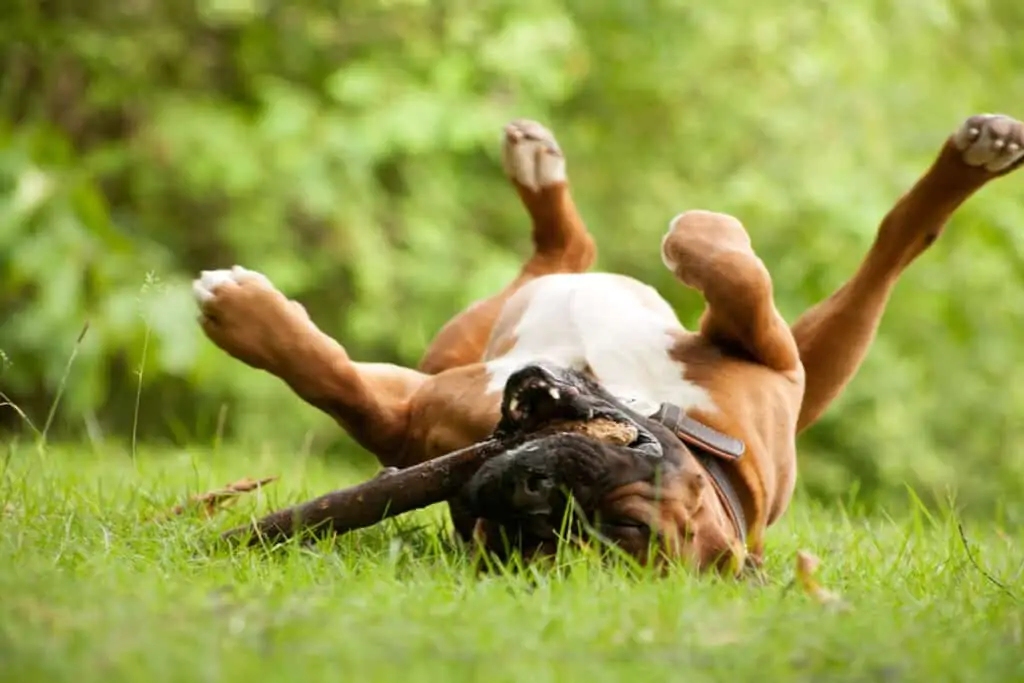
Spay or Neutering
It’s well-known that spaying or neutering a dog doesn’t stunt its growth. But did you know that fixing your Boxer at the wrong age could cause them to grow taller than nature intended?
The reason is that spaying or neutering Boxers too early can slow the closure of their growth plates. As a result, it gives your dog more time to continue growing.
Such a situation is less common in smaller dogs, given that they stop growing at an earlier age, meaning that their growth plates are usually already calcified by the time their owners fix them.
Your veterinarian can recommend the best age to spay or neuter your Boxer, striking the right balance between preventing excessive growth and ensuring you don’t wait so long that you risk them reproducing.
And if you think that you’d like to get your Boxer spayed or neutered at a young age so that they grow taller, I discourage it. Doing so can have long-term ramifications on their joint and bone health.

The Bottom Line
So, when does a Boxer stop growing? You can be sure that your Boxer will stop growing by 2 years old, although it often happens between the 12 and 18-month mark.
While assessing a Boxer puppy’s genetics and giving them the proper nutrition and exercise to facilitate their full growth are crucial, the reality is that it’s impossible to know with certainty how large a Boxer puppy will grow.
Therefore, if you have your heart set on a particular Boxer size to ensure you have enough space for them, consider adopting a full-grown Boxer from your local animal shelter.